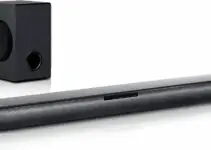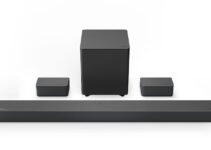If your Samsung soundbar is connected but produces no sound, it could be due to a number of possible reasons. This issue is usually common with older Samsung soundbar devices. However, if you just got your device newly and you’re experiencing this problem, you might want to consider putting the warranty to use.
For other users, there are several fixes you can apply to handle the issue. This guide will provide you with a comprehensive overview of how to troubleshoot and fix a Samsung soundbar that is connected but has no sound.
Samsung Soundbar Connected But No Sound: How to Fix

1. Check the Connections
The first step you should take is to check the connections between your soundbar and other devices. Make sure that all the cables are securely plugged in and that there are no loose connections.
If your soundbar is connected to a TV, check that the HDMI cable is properly plugged into both the TV and the soundbar. If you are using an optical cable, check that it is securely connected to both the TV and the soundbar.
If your soundbar is connected wirelessly, make sure that it is properly connected to the same WiFi network as your TV or other devices. You can check the connection status by going to the “Network” or “Wireless” settings on your soundbar.
2. Check the Sound Settings
After checking the connections, you should check the sound settings on your soundbar and other devices. Make sure that the sound is turned up and not muted on the soundbar and any other connected devices.
You should also check that the sound output is set to the correct source on your TV. For example, if you are using an HDMI connection, make sure the sound output is set to “HDMI” on your TV.
3. Check the Soundbar Firmware
If the connections and sound settings are all correct, the next step is to check the firmware on your soundbar. If the firmware is outdated, it can cause issues with the sound output.
To check the firmware on your soundbar, go to the “Settings” menu and select “Software Update.” If an update is available, follow the prompts to install it.
4. Reset the Soundbar
If none of the above steps have fixed the issue, you may need to reset the soundbar. To do this, unplug the soundbar from the power outlet and wait for a few minutes before plugging it back in.
Once the soundbar has restarted, you can try connecting it to your TV or other devices again and see if the sound is working.
5. Check for Obstructions
With the connections, settings, and firmware, and yet there is still no sound, you should check for any obstructions that may be blocking the sound from reaching your ears. Make sure that the soundbar is not covered by any objects or furniture, as this can prevent the sound waves from traveling.
6. Check for Physical Damage
Another potential issue could be physical damage to the soundbar or the cables. Check the soundbar and cables for any visible damage or wear and tear. If you find any damage, you may need to replace the damaged parts.
7. Check the Soundbar Settings
You should check the soundbar settings to make sure everything is set correctly. You can access the settings by pressing the “Menu” button on the soundbar remote.
Check that the sound mode is set to the correct setting for your current activity. For example, if you are watching a movie, you may want to set the sound mode to “Movie” or “Surround Sound.”
You can also adjust the equalizer settings to fine-tune the sound to your liking. For example, if the bass is too low, you can increase the bass level in the equalizer settings.
8. Check the TV Sound Settings
If you are using a TV as the source of audio for your soundbar, you should check the sound settings on the TV as well. Make sure that the TV audio is not muted and that the volume is turned up.
You should also check that the audio output is set to the correct source. For example, if you are using an HDMI connection, make sure the audio output is set to “HDMI” on your TV.
9. Try a Different Source
If you are still having issues with the sound, you should try a different source to see if the problem lies with the device you are using. For example, if you are using a TV as the source, try using a DVD player or other device to see if the sound works with that source.
If the sound works with a different source, the problem may be with the TV or other device you were using. In this case, you may need to troubleshoot the issue with that device.
10. Check for Any Firmware Updates on Your TV or Other Device
If you are using a TV or other device to play audio through your soundbar and subwoofer, it is important to check for any firmware updates on that device as well. Here’s how to do this:
- Check the website of your TV for any available firmware updates.
- Follow the instructions provided to download and install the firmware update.
- After the update is complete, reset the TV or other device to its default settings and try again.
11. Contact Samsung Support
Possibly, you have tried all the above steps and you are still experiencing issues with your soundbar. This could mean that it is a hardware problem that requires professional assistance. In this case, you should contact Samsung support for further assistance.
Conclusion
Fixing a Samsung soundbar that is connected but has no sound can be tough, but by following these steps and troubleshooting the issue systematically, you should be able to fix the problem and get your soundbar working again.
Remember to check the connections, settings, firmware, and physical damage, and try different sources to narrow down the cause of the issue. If you are still having problems, you can contact Samsung support for further assistance.




![Samsung Soundbar Power Consumption [Analysis] Samsung Soundbar Power Consumption [Analysis]](https://audiojust.com/wp-content/uploads/2023/08/samsung-soundbar-power-consumption-211x150.jpg)



